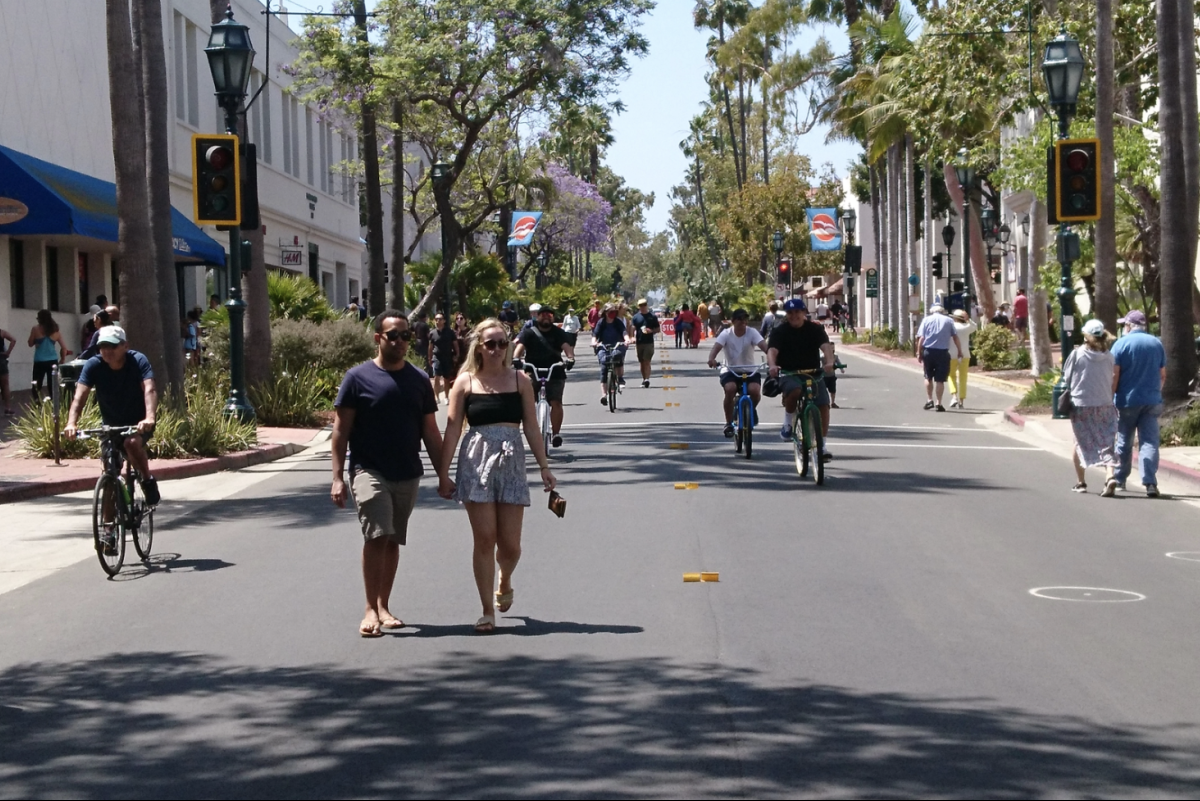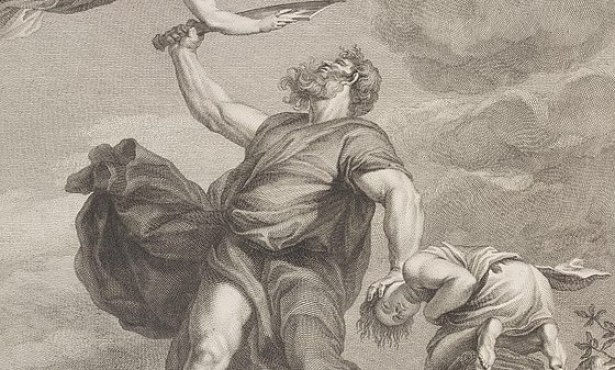Can Santa Barbara’s Downtown Be Revived?
Goodbye Jason Harris, Hello 17 Big-Brains with $1 Million

ASHES TO ASHES: By the time you read this, it will already be obsolete, superseded by more timely information. But in many ways, the basic information — or lack thereof — remains timeless. Every 50 years or so, Santa Barbara’s downtown business core is forced by external pressures to metamorphose into something different. The old model — a downtown anchored by Fortress Paseo Nuevo surrounded by a string of multistory parking lots that cost City Hall hundreds of millions — is functionally defunct. Even before COVID, the old regime was DOA, done in by cell phones and personal computers that allowed us all to shop and watch movies without leaving the comfort of home. Then COVID came along and hammered six stakes into downtown’s palpitating heart.
To its great and everlasting credit, City Hall responded by trying something genuinely innovative, new, and previously heretical to even contemplate. Like Moses banging his staff upon the rock, they declared a state of economic emergency and banned cars from a nine-block stretch of State Street. State Street was to become a “pedestrian promenade,” and City Hall decreed unto the multitudes, “Let there be parklets.”
Santa Barbarans being Santa Barbarans, we’ve been bickering about it ever since.
In the ensuing years, the City Council has been enmeshed in argument over the parklets — their rents, design, and enforcement. But the emergency legislation that enabled the creation of the promenade and the parklets is set to expire at the end of this year. The $64 billion question is, as of December 31: Now what?
In anticipation of that question — so much easier to ask than to answer — the council did two things. In the short term, they created a brand-new, high-powered “executron” position — that of economic development czar — and hired a Santa Monica guy named Jason Harris to show up and magically fix what ails State Street.

By all accounts, Harris was a genuinely nice guy with an even more genuine talent for delivering long speeches without appearing ever to breathe. But he had no staff and no budget, and if talking ever solved problems, we’d have been in the clear a long time ago. In the three years Harris was here, it’s not what he got done, but to what extent anything was possible. Given the city’s current budget woes, Harris recognized his days were as numbered as those of city parking-lot attendants. Last week, he officially vamoosed.
The long-term response was the creation of an unwieldy new State Street Advisory Committee — with 17 certified big-brain, creative types and movers and shakers — to cogitate on ways to change downtown’s very DNA such that people who live in Santa Barbara would actually want to go there. Off and on for eight months, this group has been meeting. This Monday, they met again to hash out certain economic realities — including the fact that State Street has 39 vacant storefronts. This Wednesday afternoon, the consultants, hired by City Hall to the tune of $1 million, unveiled for the first time preliminary plans with Photoshop renderings of what will be the new reality.
Given my deadlines, I only managed to get a preliminary whiff of the steak about to be served up. (Updates can be found on Independent.com.) As of now, I don’t know how many blocks the reimagined promenade will be. Or the extent to which cars might be allowed back — in some versions, cars will be allowed, I am told, but will be speed-limited to five miles per hour. One plan reportedly has cars allowed the whole stretch, but only one way. For others, it all depends on the day of the week or time of day.
According to some reviews, the initial impact of the plans will be how cool they look. Then the nagging question settles in: “Sure, they’re nice, but for $1 million?” But after that, subtle details emerge that betray a depth of thoughtfulness and ingenuity.
The whole point is to engineer the streetscape for maximum flexibility so that it can be programmed for all kinds of activities. Parades. Farmers’ markets. Music. Stuff that kids like. All kinds of who-knows-what.
The whole idea is to spark the creation of an urban neighborhood where people actually want to come and hang out whether or not they’re spending money.
It’s way too soon to say if we can get there and if the plans offer the necessary tools. But this proposed reincarnation differs dramatically from the many that have come before. All previous efforts dating back to 1950 have been predicated on creating space for the automobile. Parking. Parking. Parking. But today, our downtown parking lots — built at great taxpayer expense to know, love, and serve downtown shoppers — are about 60 percent full. Build it, it turns out, and they will stay away.
Instead, the focus of the new designs is to goad, entice, and seduce otherwise skeptical private developers, sitting on the sidelines with all their pent-up zillions, into converting much of the vacant office and retail space — and 90 percent of downtown is either retail or office space — into the housing necessary to bring downtown back to life.
Housing. Not parking. People. Not cars.
Whether we can get there or not, I like the focus.
Developer Peter Lewis — who serves on the commission — says the new plans aren’t enough. Current zoning, he says, doesn’t allow the densities needed for downtown housing projects to pencil out. Yet Lewis himself has invested $30 million on an 81-unit rental housing project on the 400 block of State Street. What are we to believe: what Lewis says or what he does?
Moses, by the way, didn’t use a pencil. He used a staff.




You must be logged in to post a comment.